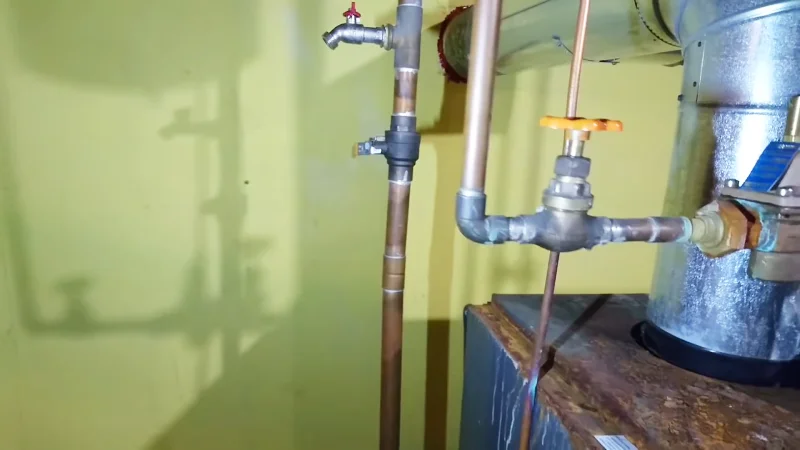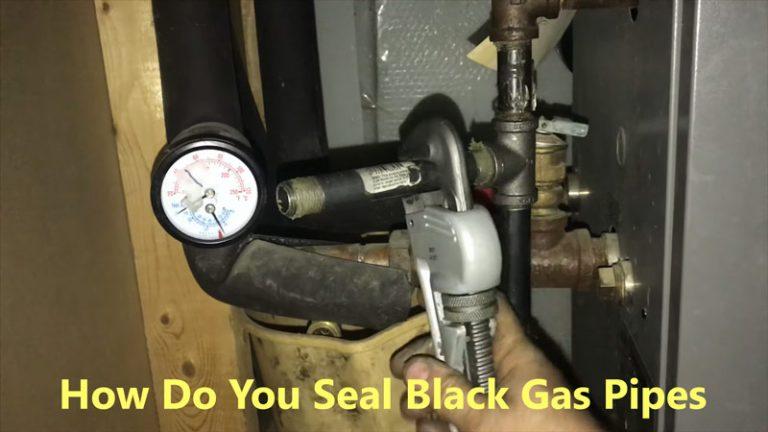How to Replace Baseboard Bleeder Valve?

Maintaining a properly functioning heating system is essential for ensuring the comfort and safety of your home. One common problem that can occur is the corrosion or malfunctioning of baseboard bleeder valves.
These valves are responsible for releasing air from the heating system, and if they are not working properly, it can lead to reduced efficiency and potentially even damage to the system. Replacing a baseboard bleeder valve may seem intimidating, but with the right tools and a little bit of know-how, it can be a relatively straightforward task.
In this article, we will outline the steps for replacing a baseboard bleeder valve and provide some tips for a smooth and successful replacement.
You'll Learn About
Replace Baseboard Bleeder Valve
You have a plan to replace the old, corroded baseboard bleeder valves with new ones. Here are a few additional steps you can take to ensure a smooth and successful replacement:
- Turn off the power supply to the boiler and make sure that it is completely cool before attempting to work on it.
- Close the manual water feed valve to the boiler and use a hose or bucket to drain the pressure from the boiler using any convenient boiler drain. It’s important to drop the system pressure to zero before attempting to remove the old bleeder valve.
- Use a penetrating oil like PB Blaster to loosen the old bleeder valve.
- Hold the 90-degree elbow fitting with pliers and attempt to back off the old bleeder valve.
- Once the old bleeder valve is removed, clean the fitting and wrap the threads of the new bleeder valve with Teflon tape. Make sure that the tape doesn’t wrap over the end of the fitting, and only use 1-2 wraps of tape.
- Quickly screw the new bleeder valve into the fitting, making sure to not overtighten it. You may still get some water out, so have some old towels or a wet-dry shop vac ready to catch the dribbles.
- Once the new bleeder valve is installed, open the manual water feed valve to the boiler and refill the system with water.
- Check the air charge on the expansion tank and address any other minor service points as needed.
It’s important to note that you should not “flush” the system, as it is not necessary and can actually introduce more air into the system, causing more problems.
Materials Needed for Replacement
It’s important to have all the necessary materials on hand before beginning the replacement process. Here is a list of the materials you will need:
- New baseboard bleeder valve: Make sure to purchase a bleeder valve that is compatible with your heating system and fits the fitting on your baseboard.
- Teflon tape: This will be used to seal the threads of the new bleeder valve to ensure a tight and leak-free connection.
- Penetrrating oil (optional): If the old bleeder valve is stuck or difficult to remove, you may want to use a penetrating oil like PB Blaster to help loosen it.
- Pliers: You will need a pair of pliers to hold the fitting while attempting to remove the old bleeder valve.
- Old towels or wet-dry shop vac: It’s possible that some water may spill out during the replacement process, so it’s a good idea to have some old towels or a wet-dry shop vac on hand to catch any dribbles.
Having all of these materials ready before you begin will make the replacement process go more smoothly. If you need to change any electrical panel, might need permit.
Before You Proceed
There are a few things you should know or have when replacing a baseboard bleeder valve:
Know the System
It’s important to understand how your heating system works before attempting to replace a baseboard bleeder valve. This will help you to identify any potential issues and ensure that you are following the proper procedures.
Have the Right Tools
Make sure to have all the necessary tools on hand before beginning the replacement process. This will include a new baseboard bleeder valve, Teflon tape, penetrating oil (optional), pliers, and old towels or a wet-dry shop vac.
Follow Safety Precautions
Working with boilers and heating systems can be dangerous, so it’s important to follow proper safety precautions. Make sure to turn off the power supply to the boiler and let it cool completely before attempting to work on it. Wear gloves and eye protection to protect yourself from injury.
Know the System Pressure
It’s important to know the system pressure of your heating system before attempting to replace the baseboard bleeder valve. This will help you to properly drain the system and ensure that you don’t accidentally release too much water.
Follow the Manufacturer’s Instructions
Make sure to follow the manufacturer’s instructions for replacing the bleeder valve. These instructions will likely include specific guidelines for installation and maintenance.
By being aware of these things and having the necessary tools and knowledge, you can ensure a smooth and successful replacement of your baseboard bleeder valve.
How to Replace Baseboard Bleeder Valve?
Replacing a baseboard bleeder valve can be a relatively straightforward process as long as you have all the necessary materials and follow the steps carefully. Here is a detailed outline of the steps involved:
- Turn off the power supply to the boiler and let it cool completely before attempting to work on it.
- Close the manual water feed valve to the boiler and use a hose or bucket to drain the pressure from the system. It’s important to drop the system pressure to zero before attempting to remove the old bleeder valve.
- If the old bleeder valve is stuck or difficult to remove, you may want to use a penetrating oil like PB Blaster to help loosen it.
- Hold the fitting with pliers and attempt to remove the old bleeder valve.
- Once the old bleeder valve is removed, clean the fitting and wrap the threads of the new bleeder valve with Teflon tape. Make sure that the tape doesn’t wrap over the end of the fitting, and only use 1-2 wraps of tape.
- Quickly screw the new bleeder valve into the fitting, making sure to not overtighten it. You may still get some water out, so have some old towels or a wet-dry shop vac ready to catch the dribbles.
- Once the new bleeder valve is installed, open the manual water feed valve to the boiler and refill the system with water.
- Check the air charge on the expansion tank and address any other minor service points as needed.
It’s important to follow these steps carefully to ensure a successful replacement of the baseboard bleeder valve.
Tips to Consider When Replacing a Baseboard Bleeder Valve
Here are a few additional tips to consider when replacing a baseboard bleeder valve:
Wear Protective Gear
It’s important to protect yourself when working with boilers and heating systems. Make sure to wear gloves and eye protection to prevent injury.
Use a Pipe Wrench
If the old bleeder valve is particularly stuck or difficult to remove, you may want to try using a pipe wrench instead of pliers. This will give you more leverage and may make it easier to loosen the valve.
Use Heat to Loosen the Valve
If the old bleeder valve is still stubbornly stuck, you may want to try applying some heat to the fitting with a propane torch. This can help to expand the metal and make it easier to remove the valve. Just be careful not to overheat the fitting, as it could cause damage.
Check for Leaks
Once the new bleeder valve is installed, it’s important to check for any leaks. Turn the power supply back on and let the boiler run for a few minutes to ensure that there are no issues. If you do notice any leaks, you may need to tighten the valve or add more Teflon tape to the threads.
Flush the System (Optional)
If you notice that the system is particularly dirty or has a lot of debris, you may want to consider flushing it out before installing the new bleeder valve. This can help to remove any contaminants and improve the overall efficiency of the system. However, be aware that flushing the system can introduce more air into the system, so it’s important to be cautious and follow proper procedures.
By following these tips, you can ensure a smooth and successful replacement of your baseboard bleeder valve.
Conclusion
In conclusion, replacing a baseboard bleeder valve is an important part of maintaining a properly functioning heating system. By following the steps outlined above and having the necessary materials on hand, you can successfully replace a baseboard bleeder valve and ensure that your heating system is operating at its best.
Proper maintenance is key for a functioning heating system, and taking the time to replace a faulty bleeder valve can save you from costly repairs in the long run. Don’t be afraid to tackle this task yourself, and if you have any questions or need further guidance, don’t hesitate to seek help from a professional.
So, it is always better to take a proper care of your heating system to avoid any unexpected breakdowns.

